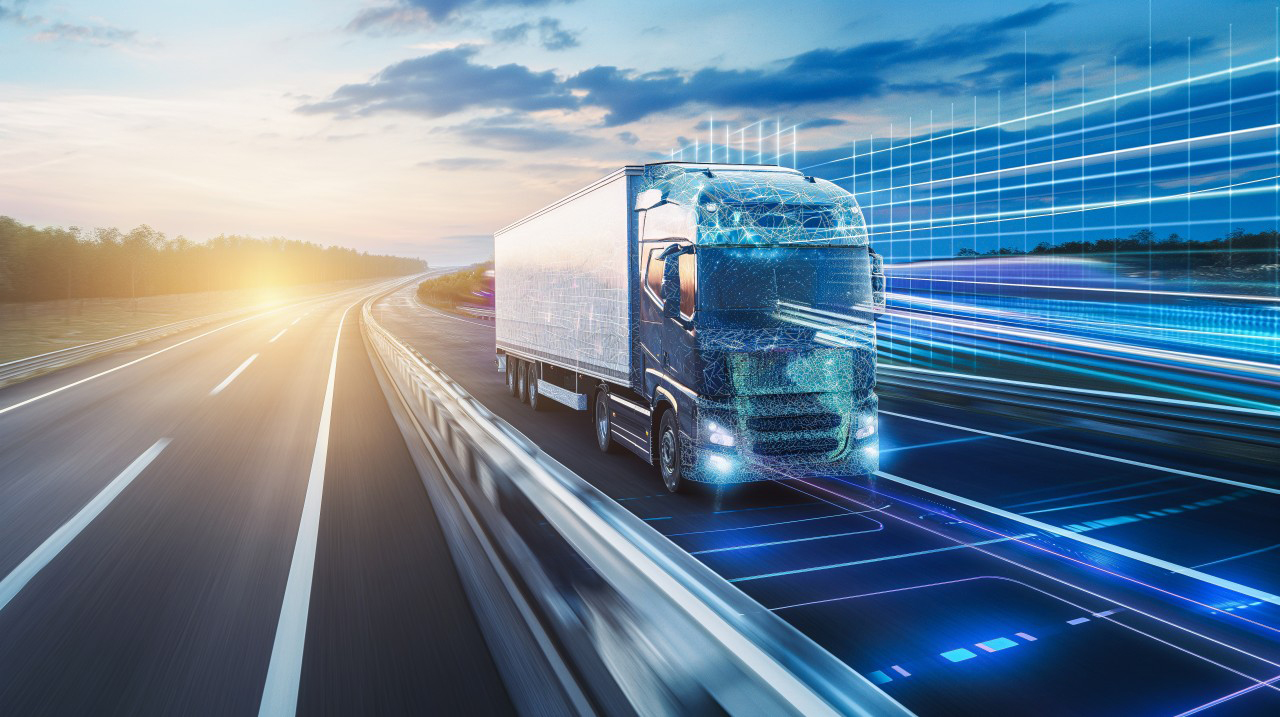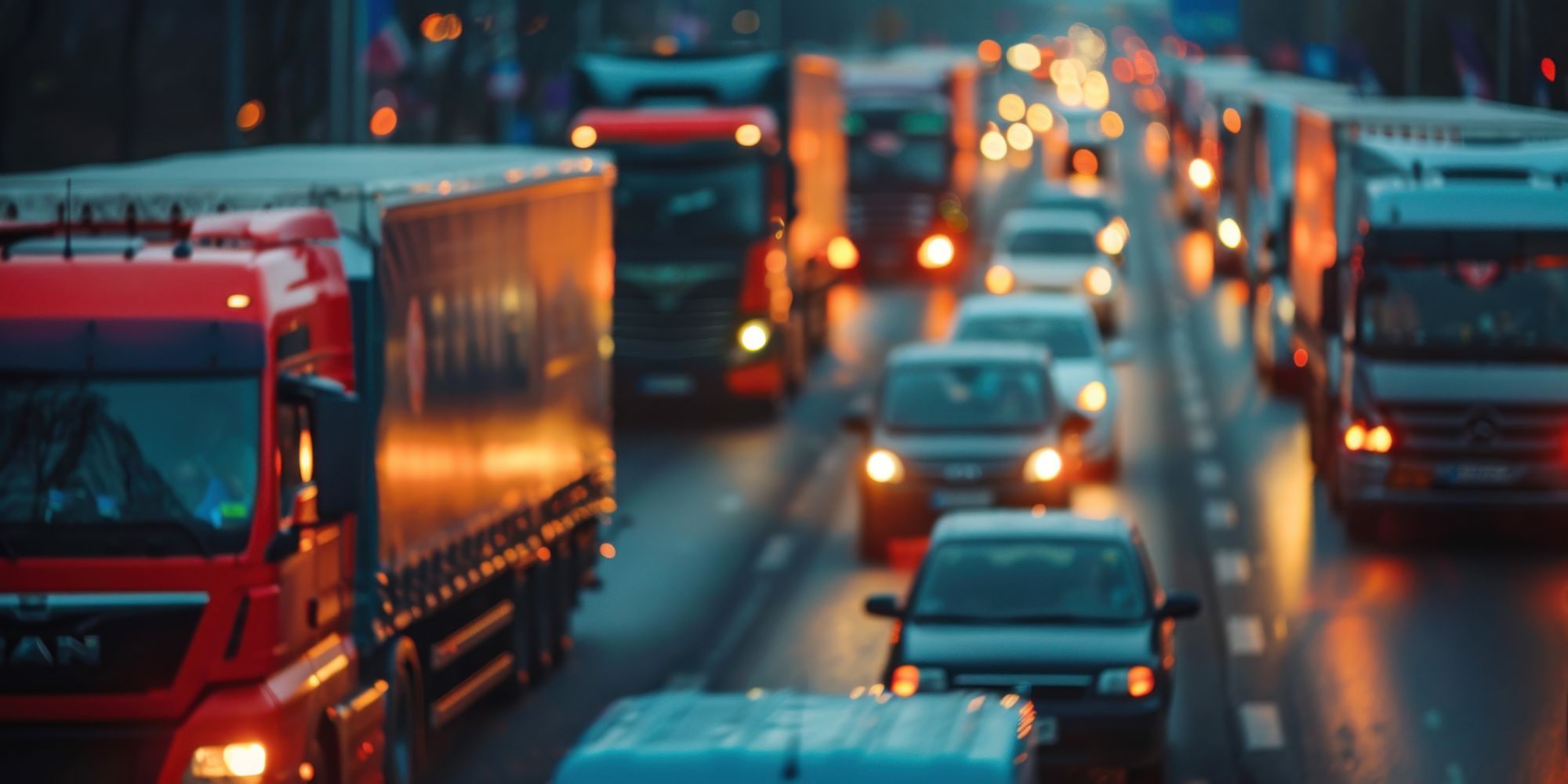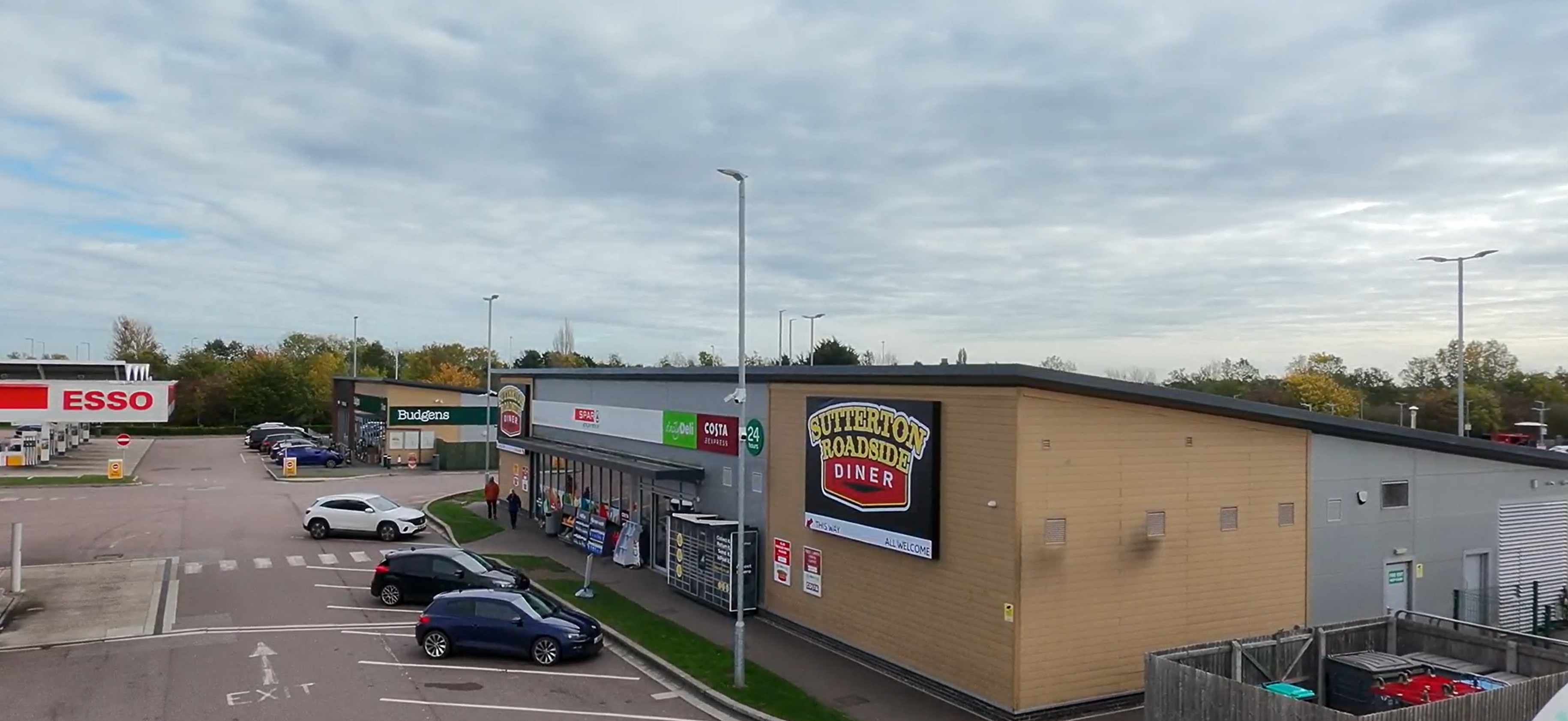
Susie Jones
L'IA et son impact sur la durabilité dans le secteur du transport routier de marchandises
Créée: 29/08/2024
•
Mise à jour : 29/08/2024
L'intelligence artificielle (IA) est un terme qui est entré dans le vocabulaire moderne ces dernières années. En raison d'un manque de compréhension et d'idées fausses, elle est souvent perçue de manière négative. Malgré ces réserves, l'IA peut avoir un impact positif sur le développement durable, les processus de travail et l'économie. Avec plus de [25 %] (https://dyce-carriers.co.uk/haulage-firms/) des émissions de CO2 produites par l'industrie des transports, l'IA peut-elle apporter un changement positif pour un avenir durable ?
Qu'est-ce que l'IA ?
Selon Oxford Languages, l'IA est :
*La théorie et le développement de systèmes informatiques capables d'effectuer des tâches nécessitant normalement l'intelligence humaine, telles que la perception visuelle, la reconnaissance vocale, la prise de décision et la traduction entre les langues.
La durabilité dans l'industrie du transport routier
Le secteur se trouve à un carrefour critique, avec des demandes accrues et des types de livraison changeants - les achats en ligne sont l'une des demandes qui se développent le plus rapidement. Si l'augmentation de la demande peut profiter au secteur du transport routier, celui-ci est confronté à un dilemme environnemental qui a un impact vital sur la planète.
L'industrie a un impact sur l'environnement de la manière suivante :
Pollution sonore : En grand nombre, les camions peuvent contribuer à la pollution sonore. La pollution sonore perturbe les zones urbaines et rurales, affectant souvent le bien-être des résidents et de la faune. L'exposition à des niveaux de bruit élevés peut entraîner du stress et des problèmes cardiovasculaires.
Émissions de carbone : Les carburants traditionnels utilisés dans les camions rejettent du CO2 dans l'atmosphère. Sur l'ensemble des émissions liées au transport mondial, 29 % proviennent du camionnage.
Qualité de l'air : Les camions émettent des oxydes d'azote et des particules, qui dégradent la qualité de l'air, nuisent à l'environnement et provoquent des problèmes respiratoires chez l'homme.
Comment l'IA peut améliorer le développement durable
Planification des itinéraires : Une planification inadéquate des itinéraires peut coûter de l'argent, du temps et des ressources aux flottes. L'IA peut prédire avec précision les demandes et les besoins - en recommandant l'itinéraire le plus durable. Ses algorithmes peuvent analyser les schémas de circulation, les conditions météorologiques et le rendement énergétique afin d'optimiser les itinéraires de livraison. Ce processus permet d'économiser de l'argent et contribue à réduire les émissions de carbone.
Prévoir la demande des consommateurs : Les produits sont souvent expédiés au consommateur sans être réclamés, ce qui entraîne un gaspillage de ressources et un impact environnemental considérable. L'apprentissage automatique et l'analyse prédictive de l'IA aideront les fabricants à anticiper la demande, à rationaliser l'approvisionnement et à optimiser les processus de fabrication. Grâce à des informations significatives sur la livraison et la non-réception des marchandises, l'IA peut informer les entreprises de logistique sur les marchandises à expédier, ce qui permet de s'attaquer aux problèmes environnementaux à la source.
Surveillance du conducteur : Les algorithmes d'IA analysent les habitudes du conducteur, telles que les excès de vitesse, les freinages brusques et la marche au ralenti. À partir de là, l'IA peut fournir des conseils et des incitations à une conduite plus économe en carburant.
Réduction de la consommation d'énergie : L'IA peut aider les entreprises de flotte à gérer l'énergie dans les chaînes d'approvisionnement. Elle peut identifier les zones inefficaces et fournir des stratégies d'optimisation - y compris l'analyse des données provenant de compteurs intelligents, de capteurs et d'autres dispositifs pour déterminer ce qui consomme trop d'énergie.
L'IA va-t-elle envahir le secteur de la logistique ?
Même si l'utilisation de l'IA jouera un rôle dans le secteur de la logistique, il est peu probable qu'elle s'impose complètement. Les algorithmes d'IA ne peuvent pas prendre en compte les événements spontanés et les exceptions - c'est pourquoi l'implication humaine jouera toujours un rôle crucial. Les possibilités de carrière dans le secteur du transport routier seront toujours présentes, mais elles seront très différentes.
Comment l'industrie peut-elle réduire ses émissions de carbone ?
L'industrie peut adopter les mesures suivantes :
Véhicules à faibles émissions : Les poids lourds électriques et hybrides peuvent réduire les émissions de carbone. Les deux types de véhicules conviennent au transport à courte et à longue distance.
Combustibles alternatifs : Avec l'approche rapide de la date butoir de 2050, la législation en matière d'énergie est axée sur des solutions de remplacement plus propres. L'huile végétale hydrotraitée (HVO) permet de réduire immédiatement et de manière significative les émissions. [Certas Energy HVO] (https://certasenergy.co.uk/my-business/products/hvo/hvo-faq-fuel-guide/) est à l'origine du passage à une alternative plus propre, aidant les entreprises à atteindre leurs objectifs en matière de développement durable et à prendre des mesures significatives en vue d'un avenir sans émissions. Le HVO offre les avantages suivants :
Une réduction immédiate des émissions de gaz à effet de serre allant jusqu'à [90 %] (https://www.gov.uk/government/publications/greenhouse-gas-reporting-conversion-factors-2023) par rapport au diesel standard, sur l'ensemble du cycle de vie du produit.
Moins d'oxydes d'azote que le diesel standard
Moins de particules que le diesel standard
Facilement biodégradable
Longue durée de conservation (jusqu'à 10 ans)
Pratiquement sans FAME
L'utilisation d'un diesel alternatif ne nécessite aucune modification du moteur ou de l'infrastructure.
Efficacité des véhicules : Les moteurs économes en carburant, la réduction des temps morts et un entretien régulier peuvent améliorer l'efficacité des véhicules.
Emballage intelligent : Les fabricants peuvent utiliser des matériaux biodégradables et recyclés pour l'expédition des articles, ce qui permet de réduire les déchets et les coûts. En outre, un emballage plus léger améliore l'efficacité et réduit les émissions de carbone.
Les énergies renouvelables : L'utilisation de sources d'énergie renouvelables, telles que l'énergie solaire ou éolienne, dans les opérations peut réduire de manière significative les émissions de carbone.
Réduire le kilométrage des détours : SNAP Account permet aux gestionnaires de flotte de réduire le kilométrage des détours - avec plus de 600 partenaires de service disponibles pour les clients de SNAP Account, il y a forcément un arrêt sur votre route.



